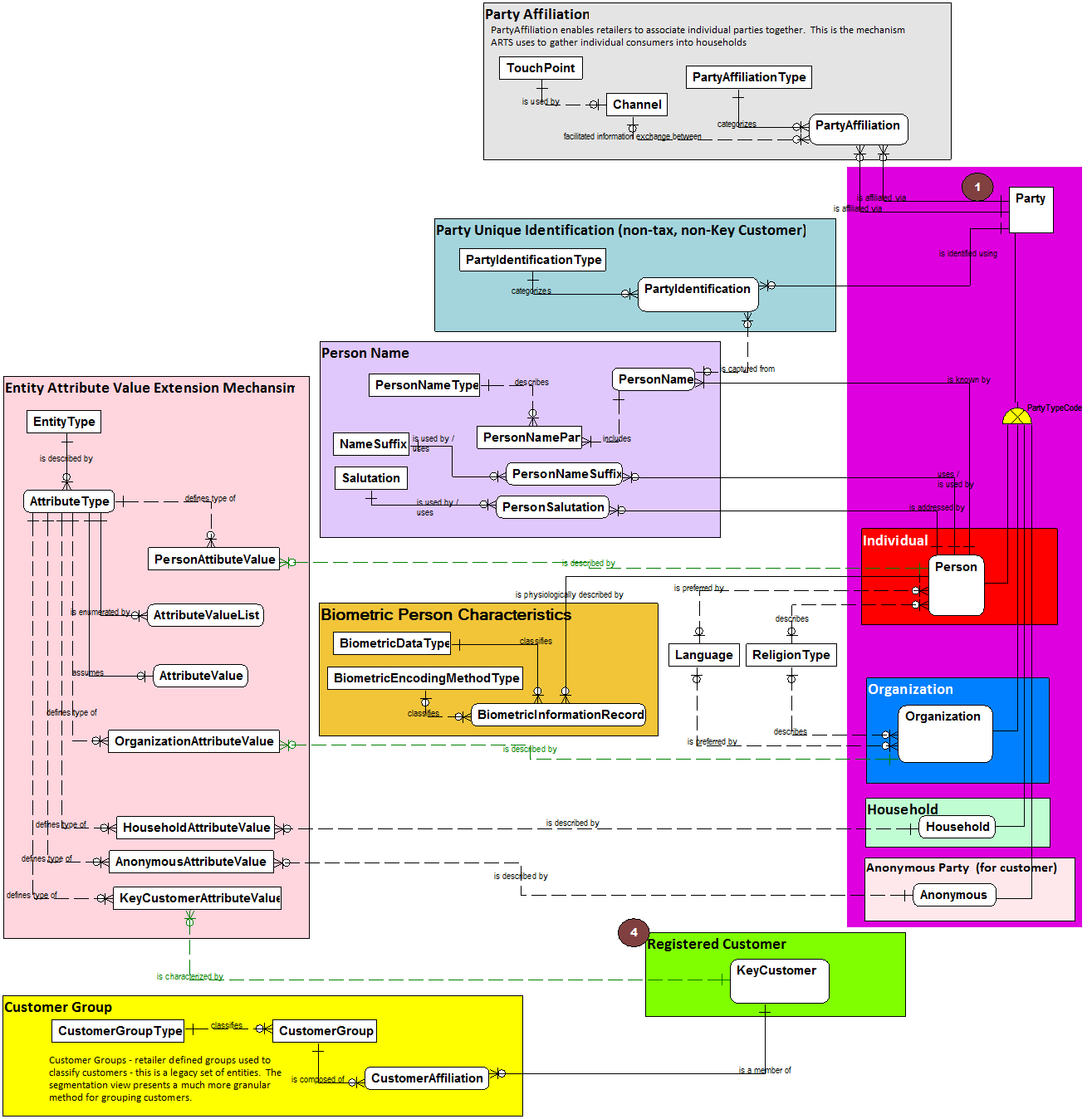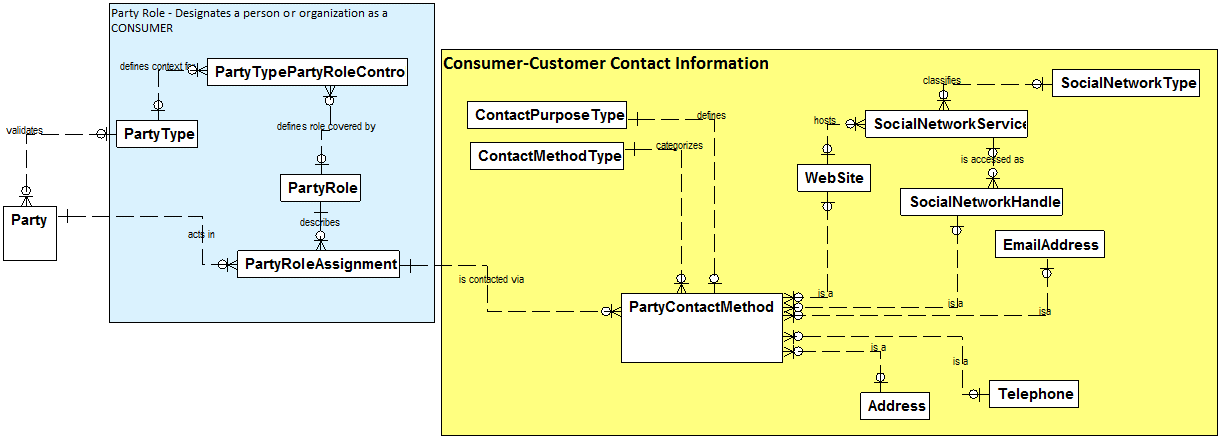This subsection highlights the entity types used to identify and name customers. As already discussed, ARTS models customers as:
•Individual people or organizations (parties);
•Who are assigned to a role of consumer (people or organizations who purchase things); and
•Consumers who have completed at least one purchase from the retailer.
Customer identity, type, name and other basic information in Logical 07010 is tied to Party. The entity model below highlights different components of a party (customer) identity and name using colored blocks.
Figure 15 - Customer Identity, Name and Type Components (Courtesy of Party)

Party Affiliation
The party affiliation block provides a join entity, PartyAffiliation, to interconnect different kinds of related parties. The PartyAffiliationType entity defines valid types of party to party affiliations. This allows retailers to associate individuals to organizations (e.g. an employee to their employer) or an individual person to a Household. The structure is flexible and allows retailers to choose the types and number of affiliations they will support. Additionally, there is an optional relationship to Channel and Touchpoint which allows retailers to incorporate where and how party affiliation may be facilitated. This enables retailers to analyze party affiliations by channel where appropriate.
Party Unique Identification
This set of entities provides a place to store non-tax unique identification information for a Party. Note that the type of identification captured may be subject to legal and regulatory restrictions. Identifications like drivers licenses, professional licenses, and other permitted forms of identification may be captured and associated with a party. As modeled a party may have any number of distinct identifiers.
Person Name
The entity types in the Person Name block are designed to support internationalized names that may not suit a strict first, middle and last name pattern. It also supplements a person's name with salutations and suffixes. These entities are optional and may be omitted since the Person entity type has first, last and middle name attributes.
Biometric Person Characteristics
This block contains entities that capture an individual's physical properties and attributes. This includes things like fingerprints, voice prints, facial patterns, retinal scans and other digitized information derived from a person's physical characteristics.
Entity Attribute Value (EAV) Extension
The entity types in the pink block provide extensible attribution for Person, Organization, Household, Anonymous and KeyCustomer entities. Its purpose is to enable retailers to add relevant attributes without having to change their database.
Customer Group
The Customer Group block allows retailers to identify party groups that are made up of unaffiliated individuals or organizations that share common interests and properties. Examples include senior citizens, military personnel, union members, clergy, etc. Retailers often provide special discounts and other rewards to these broad groups of unaffiliated customers.
Customer Contact Information
Customer contact information uses the Party contact entities to capture addresses, telephone numbers, emails, social media handles and web pages used to interact with individuals and organizations. The ARTS model is designed to store address and other contact information in one place to ensure that it is current and correct.
Figure 16 - Customer Contact Information (Courtesy of Party)

The PartyContactMethod entity links a PartyRoleAssignment to Address, Telephone, WebSite, SocialNetworkHandle and Email contact details. This approach is important because it qualifies contact information by the role a party plays in the retail enterprise. This ensures that retailers can maintain functionally-oriented views of contact data (e.g for vendor lists, employee rosters, customer mailings, etc.). PartyContactMethod is also qualified by ContactPurposeType and ContactMethodType. The purpose is to tailor access to and usage of contact information to solving a specific business problem (like paying vendors, sending legal notices, responding to resumes, etc.).